Table of Contents
The Internet Today
The internet keeps changing, and so do customer habits. Small businesses need to understand this to grow. Here are some key facts:
- There are about 1.09 billion websites online
- Around 252,000 new sites appear every day
- About 192 million of these sites are active
- 29% of business happens online now
It takes work to stand out online. There’s a lot of content, and customers want quick, personal service. Small businesses need to change how they market to meet these needs.
Using online marketing isn’t optional anymore. It’s how you find new chances, connect with customers, and grow your business.
Setting Clear Goals for Your Online Marketing
To make your online marketing work, you need clear, doable goals. Saying “I want more website visitors” isn’t enough. You need SMART goals.
SMART stands for:
- Specific: Clear and well-defined
- Measurable: You can track your progress
- Achievable: Realistic for your resources
- Relevant: Fits with your business goals
- Time-bound: Has a clear deadline
Here are some examples of SMART goals:
- Grow your brand: “Get 15% more social media followers in 3 months.”
- Get more leads: “Get 50 new leads through our website form next quarter.”
- Boost sales: “Increase online sales by 10% by the end of the year.”
- Engage customers better: “Improve email open rates by 5% and click rates by 2% in 6 months.”
SMART goals give you a clear plan. They help you measure how you’re doing and make choices based on data.
Building a Strong Online Presence
Having a strong online presence is key for any business today. It’s like your 24/7 online shop, salesperson, and brand ambassador. It’s where people find you, learn about what you offer, and decide whether to buy from you.
A strong online presence is more than just having a website or social media accounts. It’s about making a clear, impressive online identity that shows your brand values and connects with your customers.
Let’s look at two important parts of this: making a professional website and creating good content.
Making a Professional Website
Your website is often the first place people see your business online. A well-made website can make a great first impression and get more sales.
Key parts of a good website include:
- Easy to use: Make it simple for visitors to find what they need.
- Works well on phones: Make sure your site looks good on all devices.
- Clear next steps: Guide visitors to do what you want, like buying something.
- Good pictures and videos: Use eye-catching visuals to make your brand look better.
- Helpful info: Give valuable information that teaches and interests your audience.
Elementor is an excellent resource for small businesses aiming to establish an online presence. It allows you to drag and drop elements to construct your website easily and provides a wide selection of templates to choose from. It eliminates the need for coding knowledge.”
Creating Interesting Content
Good content brings your website to life. It draws people in and turns them into loyal customers. This content could be blog posts, articles, videos, infographics, or social media updates.
To make an impact, your content should be:
- High-quality: Well-written, informative, and looks good.
- Relevant: Addresses what your audience cares about.
- Valuable: Gives something useful, whether it’s fun, educational, or inspiring.
- Shareable: It is so good that people want to share it with others.
Making good content means understanding your audience and what they struggle with. It’s about giving solutions and starting conversations.
Putting out fresh content regularly keeps your audience interested and helps your site show up higher in search results.
For small businesses that need more time, tools like Elementor AI can help. It can help you generate ideas, write compelling copy, and even create images.
The 13 Best Online Marketing Strategies for Small Businesses
Now, let’s explore 13 effective online marketing strategies to help your small business grow in 2026. These strategies have helped many small businesses get great results.
1. Social Media Marketing
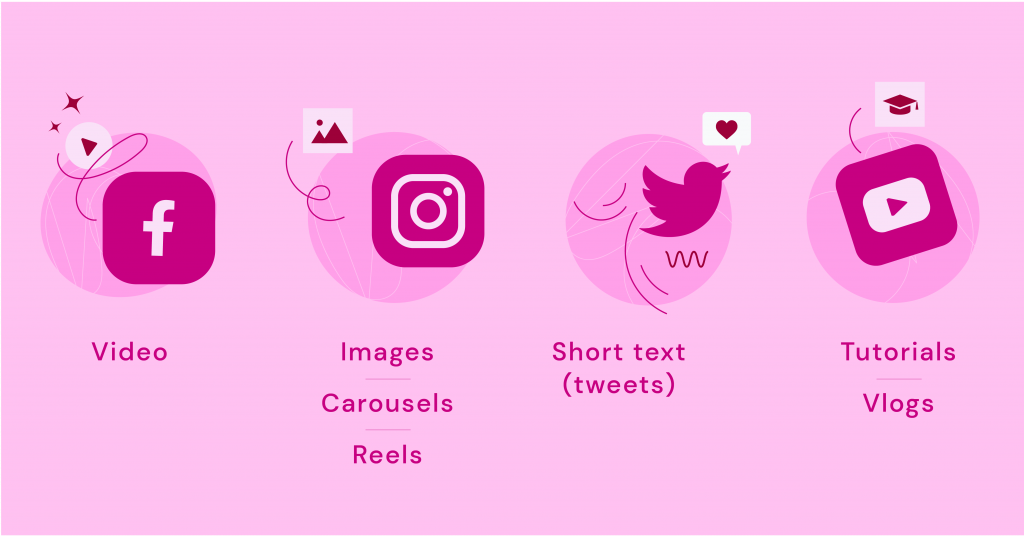
Social media has changed how businesses connect with customers. Platforms like Facebook, Instagram, Twitter, LinkedIn, and TikTok offer great ways to reach a big audience and build relationships.
Here’s how small businesses can use social media marketing:
- Choose the right platforms: Focus on where your target audience spends the most time.
- Create compelling content: Share high-quality visuals and informative posts that your audience will love.
- Engage with your followers: Respond to comments and messages quickly and honestly.
- Use paid advertising wisely: Consider using targeted ads to reach more people.
- Track your results: Monitor your social media metrics and use the insights to improve.
Social media marketing is more than just sharing your message. It’s about forming genuine connections with your audience. By producing valuable content and interacting with your followers, you can utilize social media to enhance brand awareness, generate more leads, and boost sales.
2. Search Engine Optimization (SEO)
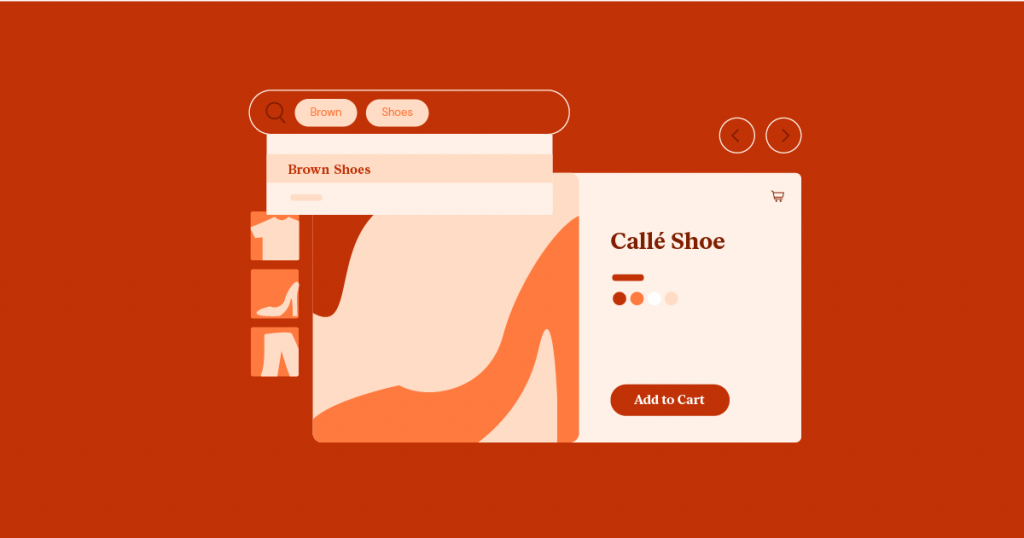
Your website is like a small shop in a big city. SEO helps people find your shop more easily. It’s about making your website more visible to search engines like Google. When you do SEO right, more people will visit your website. This can lead to more sales and brand recognition.
On-Page SEO
On-page SEO focuses on making your website friendly to search engines. Here’s what you need to do:
- Keyword Research: Find out what words people use to search for products or services like yours. Tools like Google Keyword Planner or Ahrefs can help.
- Content Optimization: Write high-quality, relevant content using your target keywords naturally. Make sure your content is helpful and interesting to your readers.
- Meta Tags: Write catchy title tags and descriptions that accurately describe your content and make people want to click.
- Header Tags: Use headers (H1, H2, H3, etc.) to organize your content. This makes it easier for search engines to understand.
- Image Optimization: Make your images smaller to help your pages load faster. Add clear descriptions (alt text) to your images for better accessibility and SEO.
- Internal Linking: Link-related pages on your website. This helps search engines find and index your content more easily.
- Mobile-Friendliness: Make sure your website works well on all devices, especially phones.
- Page Speed: Make your website load quickly to improve user experience and search rankings.
Off-Page SEO
Off-Page SEO involves things you do outside your website to improve your search rankings:
- Backlinks: Get links from other reputable websites. This demonstrates to search engines that your content is valuable.
- Social Media: Encourage interaction with your audience on social media and prompt them to share your content.
- Online Directories: List your business in relevant online directories to improve your local visibility.
- Guest Blogging: Write articles for other websites in your industry. This can help you establish yourself as an expert and earn backlinks.
- Brand Mentions: Keep an eye on online conversations about your brand and join in when relevant.
3. Email Marketing

Email marketing might seem old-fashioned, but it’s still one of the best ways for small businesses to connect with customers and make sales. It’s cheap and lets you reach customers directly in their inboxes.
Building and Nurturing an Email List
Your email list is very valuable. It’s a direct line to people interested in your brand. Here’s how to build a good email list:
- Offer incentives: Give away valuable content, special discounts, or early access to new products in exchange for email signups.
- Use opt-in forms: Put these on your website, blog, and social media pages.
- Run contests: Get people to sign up for a chance to win something.
- Promote on social media: Tell your followers about the benefits of subscribing.
Once you have a list, manage it. Send regular emails with helpful content, personalized offers, and company updates. Group your list based on age, interests, or buying behavior to send targeted messages.
Creating Effective Email Campaigns
To make your email marketing work, you need to create good campaigns. Here are some tips:
- Write catchy subject lines: Make people want to open your emails.
- Keep it short and sweet: Get to the point quickly and use pictures to break up text.
- Use a clear call to action: Tell people what you want them to do, like visit your website or buy something.
- Make it personal: Use data to tailor your messages to individual subscribers.
- Make sure it looks good on phones: Many people read emails on their phones.
Measuring Results
Keep track of your emails’ performance. Look at open rates, click-through rates, conversion rates, and unsubscribe rates. Use this information to improve your emails over time.
4. Pay-Per-Click (PPC) Advertising
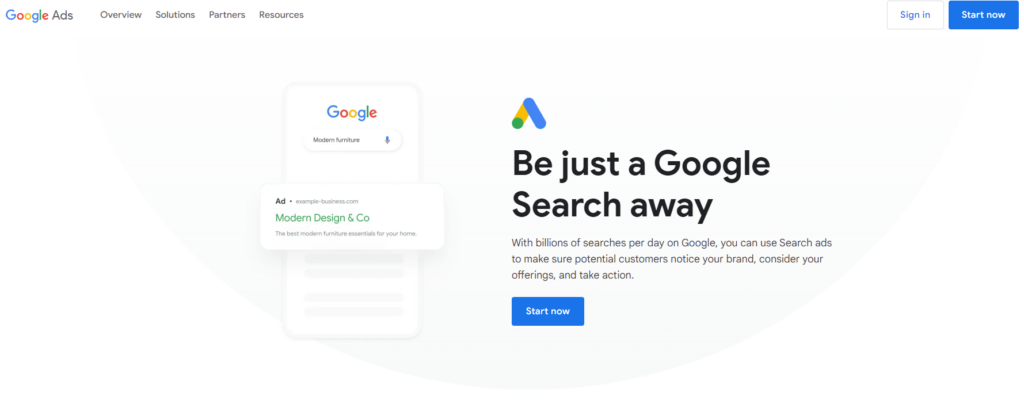
PPC advertising is when you pay a small fee each time someone clicks on your ad. It’s a way to buy visits to your website instead of trying to get them for free.
Google Ads is the most popular PPC system. It lets you create ads that show up on Google’s search engine and other Google sites.
How PPC Works
- Keyword Research: Find relevant words that your target audience is searching for.
- Ad Creation: Write compelling ads that include your target keywords and a clear call to action.
- Bidding: Set the maximum amount you’re willing to pay for each click on your ad.
- Ad Placement: Your ads will show up on search results pages or other websites based on your targeting and bid.
- Payment: You only pay when someone clicks on your ad.
Benefits of PPC Advertising
- Targeted Reach: Show your ads to the right people at the right time.
- Quick Results: See results fast, unlike SEO, which takes time.
- Measurable ROI: Track how well your ads are doing and calculate your return on investment.
- Budget Control: Set a daily or monthly budget, and only spend what you want.
- Brand Awareness: Even if people don’t click, they still see your brand.
Tips for Successful PPC Campaigns
- Do thorough keyword research to find high-intent keywords with reasonable competition.
- Write clear, compelling ad copy that highlights what makes your business unique.
- Create specific landing pages that match your ad message and encourage conversions.
- Use ad extensions to provide extra information and make your ad more visible.
- Test different versions of your ads to see what works best.
- Regularly check your campaign performance and make changes as needed.
5. Content Marketing
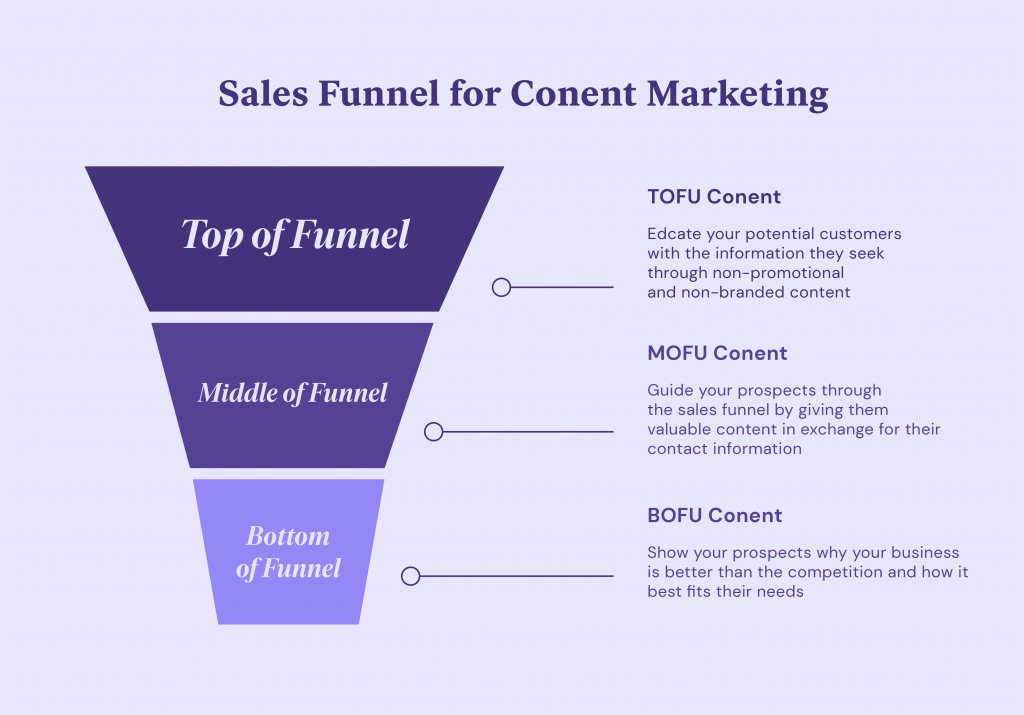
Content marketing involves creating and sharing valuable, relevant content to attract and retain a specific audience. It is not about self-promotion but rather about providing value, showcasing expertise, and fostering trust.
Why Content Marketing Matters for Small Businesses
Content marketing isn’t just for big companies. It’s great for small businesses, too:
- Increases brand awareness: By sharing valuable content, more people learn about your brand and see you as an expert.
- Improves search rankings: Good, optimized content can help you show up higher in search results.
- Generates leads: You can use content to generate leads by offering ebooks or webinars in exchange for contact info.
- Builds customer loyalty: Engaging content keeps people coming back, building relationships and loyalty.
- Cost-effective: Compared to traditional ads, content marketing is often cheaper and can give better results.
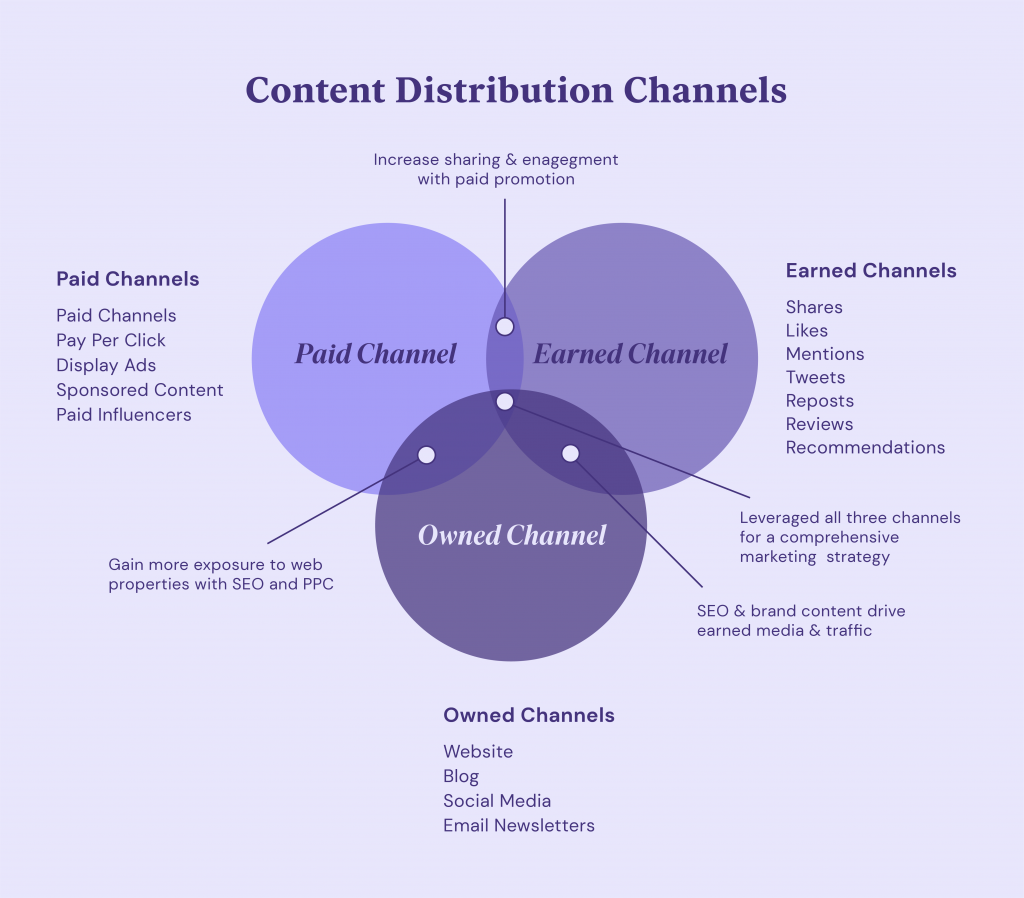
Types of Content
There are various types of content that you can utilize to engage with your audience:
- Blog Posts: Regular blog posts share your expertise and can improve your website’s SEO.
- Infographics: Visual representations of data or information are easy to share, especially on social media.
- Videos: Videos help you connect with your audience personally and show your products in action.
- Ebooks and Whitepapers: These in-depth resources can generate leads and show your expertise.
- Social Media Posts: Share snippets of your content, behind-the-scenes peeks, and engaging visuals on social media.
Tips for Successful Content Marketing
- Know your audience: Understand what they need and care about to create content that connects.
- Focus on quality: It’s better to make a few great pieces of content than lots of okay content.
- Optimize for search engines: Use relevant keywords and follow SEO best practices to improve your visibility.
- Promote your content: Share your content on social media, email, and other channels.
- Measure your results: Keep track of how your content is doing and use this info to improve.
Keep in mind that content marketing demands time and dedication to attract an audience and achieve outcomes. Yet, by maintaining regularity, fostering originality, and concentrating on delivering value, you can leverage content marketing to substantially expand your small business.
6. Local SEO
More and more people are using their phones to find businesses near them. That’s why Local SEO is so important for small businesses that serve a specific area. It helps people in your area find your business when they search online. By focusing on Local SEO, you can bring more people to your store, get more leads, and become well-known in your community.
What is Local SEO?
Local SEO is a type of SEO that helps your business show up in local search results. It uses both on-page and off-page tactics to make your business more visible when people search for products or services near them. When someone searches for something local, search engines like Google look at where they are and show them the most relevant results.
Key Parts of Local SEO:
- Google My Business (GMB): This is the most important part of local SEO. Claim and set up your GMB listing with correct business info, photos, and customer reviews.
- NAP Citations: Make sure your business name, address, and phone number (NAP) are the same on all online directories.
- Local Keywords: Use words about your location in your website content and meta tags.
- Local Content: Create content that your local audience will like, such as blog posts about local events or news.
- Online Reviews: Ask customers to leave reviews on Google, Yelp, and Facebook.
- Mobile-Friendly Website: Make sure your website works well on phones, as many local searches happen on smartphones.
Tips to Improve Your Local SEO:
- Claim and verify your GMB listing: This is the first and most important step.
- Keep your NAP info the same everywhere: Make sure your NAP information is consistent across all platforms, as having different information can lead to confusion among search engines and negatively impact your rankings.
- Use local keywords on your website: This helps search engines understand you’re relevant to local searches.
- Create good, local content: This can bring in local visitors and improve your search rankings.
- Encourage and respond to online reviews: Good reviews can make people trust you more and attract more customers.
- Make your website work well on phones: This is crucial for local SEO.
By using these local SEO strategies, you can make your business easier to find in local search results. This can bring more people to your store and get you more leads and sales from your local community.
7. Online Reputation Management (E-PR)
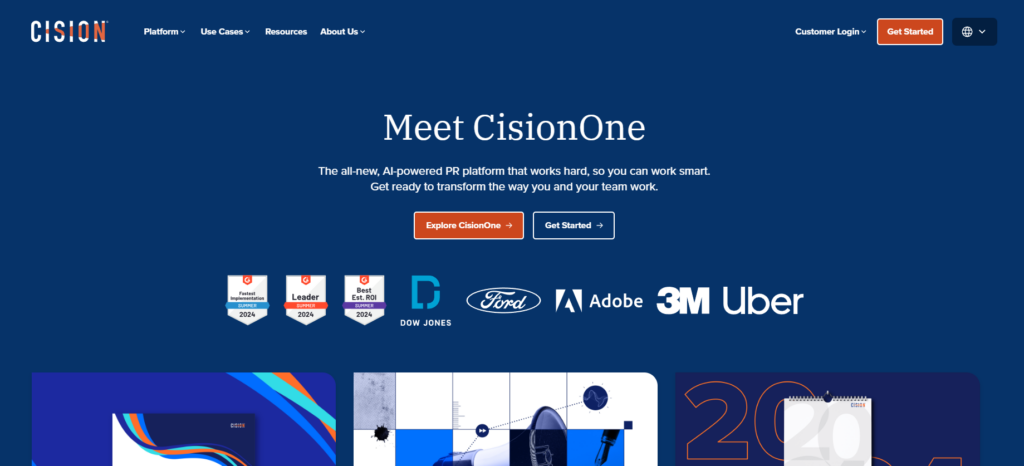
These days, your online reputation is super important. It’s what potential customers see when they look for your business online. It can really affect whether they decide to buy from you. Good reviews and feedback can make people trust you, while bad reviews can hurt your image and scare away potential customers.
Online reputation management (ORM) is about monitoring, influencing, and controlling your brand’s reputation online. You need to listen to what people say about your business, respond to feedback, and deal with any negative comments.
Why ORM Matters for Small Businesses:
- Builds trust: Good reviews and feedback can help you build a strong reputation and attract more customers.
- Improves search rankings: Search engines often look at online reviews when ranking local businesses.
- Gives valuable insights: Watching online conversations can help you understand what your customers want and need.
- Deals with negative feedback: Responding to bad reviews quickly and professionally can limit the damage and show that you care about your customers.
Tips for Managing Your Online Reputation:
- Watch online reviews and mentions: Utilize tools such as Google Alerts or social media monitoring software to observe the public’s opinions about your company.
- Respond to all reviews, good and bad: Show appreciation to customers for positive feedback and tackle any issues raised in negative reviews.
- Be professional and polite in your responses: Even when dealing with negative feedback, stay calm and respectful.
- Fix any real problems: If a customer has a valid complaint, take action to solve the issue and stop it from happening again.
- Ask happy customers to leave reviews: Make it easy for happy customers to share their positive experiences.
Responding to Negative Reviews:
Bad reviews can be tough, but they’re also a chance to show how much you care about customer satisfaction. Here’s how to respond to negative reviews:
- Respond quickly: The longer you wait, the more damage the bad review can do.
- Show you understand their concerns: Let them know you’re taking their feedback seriously.
- Say sorry for any problems: Even if you don’t agree with them, apologize for their bad experience.
- Offer a solution: Try to fix the issue or make it up to them.
- Take the conversation private: If the issue is complicated or sensitive, offer to discuss it more by phone or email.
By proactively controlling your online reputation, you can develop trust, enhance your brand’s image, and draw in more customers. Keep in mind that the goal is not to dodge all negative feedback but to deal with it effectively and use it as an opportunity to demonstrate your commitment to customer satisfaction.
8. Influencer Marketing
In the world of social media, influencers have a lot of power over what people think and buy. Influencer marketing uses this by working with people who have a lot of followers and influence in your target market. It’s a way to use their trust and credibility, reach more people, and get people talking about your brand.
Why Influencer Marketing Works for Small Businesses:
- Real Endorsements: Influencers give genuine recommendations, making your brand message more authentic.
- Wider Reach: Working with influencers can get your business in front of thousands or even millions of new people.
- Targeted Audience: You can work with influencers whose followers match your target market, making sure your message reaches the right people.
- Cost-Effective: Compared to traditional advertising, influencer marketing can be cheaper, especially for small businesses.
- More Brand Awareness and Credibility: Linking your brand with a respected influencer can boost how visible and trustworthy you are.
Tips for Finding and Working with Relevant Influencers:
- Set Your Goals: Decide what you want to achieve with influencer marketing, whether it’s brand awareness, leads, or sales.
- Know Your Target Audience: Understand who your ideal customers are and what influencers they follow.
- Research Potential Influencers: Look for influencers who match your brand values and target audience. Consider how engaged their followers are, the quality of their content, and how many people they reach.
- Reach Out and Build Relationships: Connect with influencers through direct messages, emails, or social media comments.
- Set Clear Expectations: Establish clear guidelines for the collaboration, including what they need to do, when, and how they’ll be paid.
- Track and Measure Results: Watch how your influencer marketing campaigns perform and adjust your strategy as needed.
Remember, being real is key in influencer marketing. Work with influencers who truly believe in your brand and whose values match yours. Avoid overly promotional content and focus on creating meaningful collaborations that provide value to both the influencer’s audience and your business.
9. Video Marketing

In our fast-moving online world, video content reigns supreme. It catches the eye and keeps people hooked like no other medium. Videos can:
- Tell compelling stories
- Spark emotions
- Show products or services in action
That’s why video marketing has become essential for businesses of all sizes, including small companies aiming to make a big splash.
Why Your Small Business Needs Video Marketing
- Higher Engagement: People are more likely to share and remember videos than other content types. This boosts your brand awareness and reach.
- Improved Conversion Rates: Videos effectively showcase your products or services, leading to more sales.
- Better Search Rankings: Search engines favor websites with video content, improving your online visibility.
- Stronger Social Media Presence: Videos perform well on social platforms, driving engagement and attracting new followers.
- Personal Connection: Videos help you connect with your audience on a more personal level, building trust and loyalty.
How to Create Engaging Video Content
- Tell a Story: Craft a narrative that grabs attention and stirs emotions.
- Keep it Brief: People’s attention spans are short. Make your videos concise and focused.
- Ensure Quality: Use good equipment or hire a professional to make your videos look and sound great.
- Adapt for Different Platforms: Adjust your videos to fit each social media platform or website’s specific requirements.
- Include a Call to Action: Tell viewers what to do next, such as visiting your website, making a purchase, or subscribing to your channel.
Optimizing Your Videos for Success
- Do Keyword Research: Find relevant keywords and use them in your video titles, descriptions, and tags.
- Create Eye-Catching Thumbnails: Make thumbnails that accurately represent your video content and grab attention.
- Add Captions and Transcripts: This makes your videos accessible to more people and improves SEO.
- Promote Your Videos: Share them on social media, add them to your website, and consider using paid advertising to reach more people.
- Check Your Analytics: Track how your videos perform and use these insights to improve your strategy.
Video marketing gives small businesses a unique chance to share their stories, showcase their products, and connect with their audience in a meaningful way. By making high-quality, engaging videos and optimizing them for search and social media, you can harness the power of video to achieve great results for your business.
10. Affiliate Marketing
Affiliate marketing is a great way for small businesses to reach more people and make more money through partnerships. It’s a type of marketing where you promote another business’s products or services and earn money for each sale made through your special link. It’s good for everyone: the business gets more exposure and sales, and you earn money without much risk.
Why Affiliate Marketing is Good for Small Businesses:
- Low Risk, High Reward: You only pay when someone makes a sale, so it’s a cheap way to make money.
- Reach More People: You can tap into the affiliate’s audience and reach potential customers you might have yet to reach on your own.
- Passive Income: Once you set up your affiliate links, you can keep earning money even when you’re not actively promoting the products.
- Build Trust: Working with well-known brands can make your own brand seem more trustworthy.
Tips for Finding and Managing Affiliate Partners:
- Choose Products That Fit: Promote products or services that your audience will like and need.
- Look for Good Affiliate Programs: Find programs with good commission rates, quality products, and reliable ways to track sales.
- Build Good Relationships: Talk openly and honestly with your affiliate partners to create a strong working relationship.
- Create Good Content: Promote affiliate products through interesting blog posts, reviews, social media posts, or email newsletters.
- Keep Track of Results: Monitor the performance of your affiliate links to determine which products and strategies are driving the most sales.
Affiliate marketing is an exciting chance for small businesses to make money in different ways and reach more people. But you need to do it smartly. Pick the right partners, create compelling content, and keep track of your results carefully to make sure it works. Always be honest with your audience about your affiliate relationships and only promote products or services you really believe in.
11. Referral Marketing
Word-of-mouth has always been a powerful way to market. Referral marketing takes this idea and makes it more organized and trackable. It’s about giving your current customers reasons to tell their friends, family, and networks about your business.
Why Referral Marketing is Great for Small Businesses:
- Trust and Credibility: People are more likely to trust recommendations from people they know, making referrals very effective in getting new customers.
- A Cheap Way to Get New Customers: Referral marketing often costs less to acquire new customers than other marketing methods.
- More Loyal Customers: Rewarding customers for referrals makes them more loyal and likely to buy again.
- Natural Growth: Referral marketing can help your business grow naturally as happy customers share their good experiences.
Tips for Creating a Good Referral Program:
- Make it Easy: Provide clear instructions and a simple referral process. Consider using a special referral page or automated email system.
- Offer Good Rewards: Rewards can be discounts, free products, special access, or even cash. Make sure the rewards are good enough to motivate people to make referrals.
- Tell People About Your Program: Make sure your customers know about your referral program. Promote it on your website, social media, email newsletters, and even in your store.
- Track and Measure Results: Use tools to track referrals and see how well your program is working.
- Show Thanks: Thank your customers for their referrals and recognize how they’re helping your business grow.
Referral marketing uses the trust people have in personal recommendations. It’s a way to turn your happy customers into enthusiastic fans of your brand, helping you reach more people and grow your business steadily. By making an easy-to-use program with good rewards, you can create a powerful engine for word-of-mouth marketing that fuels your business’s success.
12. Retargeting Ads
Have you ever looked at something in an online store, left without buying, and then seen ads for those same products on other websites? That’s retargeting. It’s a powerful way to reconnect with potential customers who have already shown interest in your brand or products. By showing ads to these people, you can remind them of your brand, encourage them to come back to your site, and hopefully get them to buy.
How Retargeting Works:
- Tracking Pixels: When someone visits your website, a small piece of code called a pixel is placed on their browser. This pixel tracks what they do and lets you show them ads later.
- Ad Platforms: You can run retargeting campaigns on various platforms, including Google Ads, Facebook Ads, and social media platforms.
- Targeted Ads: These ads are made to match what the user did on your website, like looking at a product page or adding something to their cart.
Benefits of Retargeting for Small Businesses:
- Better Conversion Rates: Retargeting reminds people of products they are interested in, making them more likely to buy.
- More Brand Awareness: By staying in people’s minds, you strengthen your brand presence and encourage repeat visits.
- Cost-Effective: Retargeting typically costs less per click than other types of advertising, making it good for small business budgets.
- Personalized Advertising: You can tailor your ads to specific groups based on what they did on your site.
Tips for Setting Up Retargeting Campaigns:
- Group Your Audience: Create different retargeting campaigns for various groups based on their actions on your website.
- Write Compelling Ad Copy: Use clear and persuasive language that encourages users to take action.
- Use Eye-Catching Images: Include high-quality pictures or videos that showcase your products or services.
- Limit Ad Frequency: To avoid overwhelming users with too many ads, limit how often they see your ads per day or week.
- Watch and Improve: Track how your campaign is doing and make changes to improve results.
Retargeting is a very effective way to reengage potential customers and increase sales. By reminding people of their interest in your brand and offering relevant incentives, you can turn window shoppers into loyal customers.
13. Community Building
These days, when online connections can sometimes feel shallow, building a community has become a powerful way for small businesses to create loyalty and real relationships with their audience. It’s about making a space where customers, fans, and people who love your brand can connect, interact, and share their experiences.
Building an engaged community offers several benefits:
- Stronger brand loyalty: People who feel like they belong to a community are more likely to support and recommend your brand.
- More customer engagement: A community provides a place for two-way communication, allowing you to get feedback, address concerns, and build stronger relationships with your audience.
- Valuable insights: Listening to your community’s conversations can reveal a lot about their needs, likes, and problems.
- Natural growth: A thriving community can act as a powerful marketing tool, generating word-of-mouth referrals and user-created content.
Tips for Building a Strong Online Community:
- Pick the Right Platform: Choose platforms that fit your target audience and brand identity. Popular options include Facebook Groups, online forums, or dedicated community platforms.
- Create Interesting Content: Share valuable and relevant content that starts conversations and encourages participation.
- Host Events and Activities: Organize online meetups, webinars, or Q&A sessions to bring your community together and give them chances to interact.
- Be Responsive and Genuine: Engage with your community members quickly and honestly. Respond to comments, answer questions, and show appreciation for their contributions.
- Empower Your Members: Encourage users to create content, highlight member achievements, and create opportunities for leadership within the community.
Building a community takes time and effort. It requires consistent work, dedication, and a real desire to connect with your audience on a deeper level. By providing a welcoming and supportive environment, you can foster a loyal community that supports your brand, gives valuable feedback, and contributes to your long-term success.
Measuring and Analyzing Results
You’ve put in time, effort, and money to use your online marketing strategies. Now it’s time for the important part: measuring and analyzing your results. This is about more than just looking at numbers or feeling good about your work. It’s about learning what’s working, what’s not, and how you can make your strategies even better.
Why Measurement and Analysis Matter:
- Make Better Decisions: Without data, you’re guessing. Tracking your results helps you decide where to spend your resources and how to improve your campaigns.
- Find Strengths and Weaknesses: Your data can help you see which strategies are performing well and which ones need work.
- Show Value: Measuring your results lets you show how your marketing efforts are paying off to stakeholders or investors.
- Keep Improving: Regular analysis helps you fine-tune your strategies and stay ahead of competitors.
Key Performance Indicators (KPIs) to Track:
The specific KPIs you track will depend on your goals and the strategies you’re using. Here are some important ones to consider:
- Website Traffic: Monitor the number of visitors to your website, where they come from (like search engines or social media), and what they do on your site.
- Conversion Rate: Track the percentage of visitors who do what you want, like buying something or signing up for your newsletter.
- Cost per Acquisition (CPA): Figure out how much it costs on average to get a new customer through your marketing efforts.
- Return on Ad Spend (ROAS): Measure how much money you make for every dollar you spend on advertising.
- Customer Lifetime Value (CLTV): Estimate how much a customer will spend with your business over time.
- Social Media Engagement: Track things like likes, shares, comments, and followers to see how well you’re doing on social media.
- Email Open Rates and Click-Through Rates: See how many people open your emails and click on the links inside.
Essential Analytics Tools:
- Google Analytics: A powerful and free tool for tracking website traffic and user behavior.
- Google Search Console: Learn about your website’s search performance and find any technical issues.
- Social Media Analytics: Most social media platforms have built-in tools to track engagement and follower growth.
- Email Marketing Platforms: These usually provide detailed info on open rates, click-through rates, and conversions.
- Third-Party Tools: Consider using specialized tools like SEMrush or Moz for more in-depth SEO analysis or Hootsuite for social media management and reporting.
Remember, data is only useful if you use it to make decisions. Make a habit of regularly reviewing your analytics, spotting trends, and adjusting your strategies. By using data to guide you, you can keep improving your online marketing efforts and achieving better results for your small business.
Adapting and Optimizing Strategies
Online marketing is always changing. People’s behaviors shift, new platforms pop up, and the rules of the game change. What worked yesterday might not work today, and what works today might not work tomorrow. That’s why it’s crucial to adapt and optimize your strategies to keep succeeding.
Think of your online marketing plan as alive and growing. You need to take care of it, monitor it, and adjust it regularly to ensure it stays effective and relevant. The key is to be flexible and willing to try new things.
Why Adaptation and Optimization Are Important:
- The online world keeps changing: New platforms, technologies, and trends are always appearing. By adapting your strategies, you can stay ahead and ensure that your marketing efforts continue to work.
- People’s behavior changes: What your target audience wants and needs today might be different tomorrow. By regularly looking at your data and insights, you can adjust your strategies to meet their changing expectations.
- Competition is tough: Your competitors are always improving their own marketing strategies. To stay ahead, you need to be willing to experiment and try new things.
- No strategy is perfect. Even the best marketing plan can be improved. By analyzing your results and finding areas for improvement, you can optimize your strategies for the best impact.
Tips for Adapting and Optimizing Your Strategies:
- Examine your analytics data regularly. Track your key performance indicators (KPIs) and look for trends and patterns.
- Do A/B testing: Try different versions of your ads, landing pages, or email campaigns to see what works best.
- To stay current about industry trends, Read blogs, attend webinars, and network with other marketers.
- Be willing to try new things: Don’t be afraid to experiment and step outside your comfort zone.
- Learn from your mistakes: If a strategy doesn’t work, figure out why and use those lessons to improve your future efforts.
Remember, the most successful marketers are those who can adapt and are willing to change. By staying flexible, trying new ideas, and continuously improving your strategies, you can make sure your online marketing efforts stay effective and help your small business grow.
Conclusion
In 2026, online marketing isn’t just an option for small businesses – it’s a must. By using a mix of the 13 strategies we’ve talked about, even businesses with small budgets can reach more people, get them engaged, and turn them into customers. Remember, it’s not just about being seen. It’s about telling a good story, building relationships, and giving value every step of the way. The online world might be big, but with hard work, creativity, and the right tools, your small business can find its place and grow.
Give online marketing a try, and watch your business shine online. If you’re ready to take the next step, think about using tools like Elementor to make building and hosting your website easier. This can make your online marketing journey smoother.
Looking for fresh content?
By entering your email, you agree to receive Elementor emails, including marketing emails,
and agree to our Terms & Conditions and Privacy Policy.






